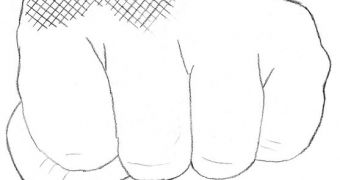Since the beginning of time, people have always been amazed by the great capabilities that human bones possess. They are most definitely among the strongest materials out there today, being capable of extraordinary feats. But, as most of you already know, they can break from time to time. So what is it exactly that makes these hardened tissues fail under pressure? Experts take a look at the behaviors bones exhibit.
Pound for pound, they are harder than steel. For any bone in your body, a piece of steel able to sustain the same amount of weight would weigh four to five times more. Theoretically speaking, each cubic inch of bone in your body is able to support as much as 19,000 lbs. (8,626 kg), give or take a few pounds. But one of the determining factors that determine whether this actually happens in practice is distribution. In other words, the way in which the weight is applied is crucial.
Take, for example, CPR. When properly used, the technique saves lives, by jump-starting the heart, and allowing drown victims, or trauma patients, to survive. But when the paramedic applies the pressure too hard on the ribcage, it can fracture several ribs at once. What varies in this scenario is not the amount of force used, but the speed with which it was applied, researchers from the Wayne State University in Detroit explain.
When it comes to fighters, such as boxers, the mathematics governing bone resistance to blows change considerably. A well-executed punch can generate between 3,300 and 5,000 newtons of force. This is roughly the same force exerted on the Earth's crust by half a ton of material. Such a devastating blow, very common in the ring, has a 25-percent chance of cracking a rib, but a smaller chance of cracking the femur. A leg kick can generate 4,000 newtons of force. “That doesn't mean that below those values you won't have a fracture or above them you will,” biomedical engineer Cindy Bir explains, adding that a variety of factors are also at work.
Some of them include the amount of fat, soft tissue and muscle covering the bone, the angle of the blow, and so on. “We try as best as we can to study athletes in their native environment, so to speak, so more time in the ring, or during bouts or fights the better – that's when they're really fighting to peak potential. It can be difficult integrating equipment into that environment to measure them, since you don't want to interfere with their normal functioning, such as sensors that might decrease the protective effect of their gloves. The nice thing is that technology is advancing and getting smaller and wireless, to not get in the way of what people are doing,” Bir reveals.
“We joke that if someone is willing to get hit in the head, we should be measuring it. If we know what causes an injury, you can do simple things like develop better protective gear and design bike helmets to help, say, 7-year-olds,” the expert concludes, quoted by LiveScience.

 14 DAY TRIAL //
14 DAY TRIAL //